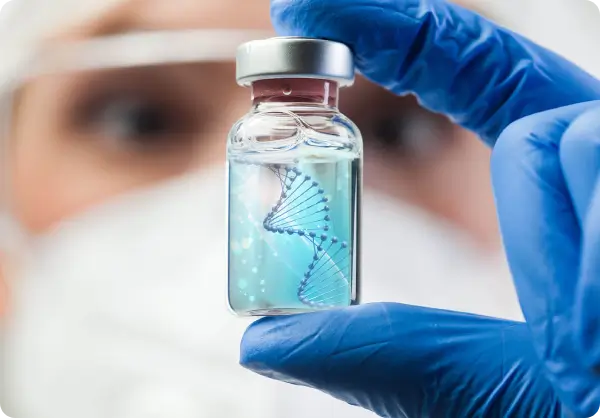RPA
Regenerative Protein Array
Groundbreaking advancement in healing science with 80+ healing proteins - a generation beyond PRP, stem cells, and exosomes.

REVOLUTIONARY HEALING SCIENCE
What is RPA?
Regenerative Protein Array (RPA) represents a groundbreaking advancement in the science of healing in the human body. RPA is a sophisticated array of proteins, growth factors, and cytokines that represent a generation beyond PRP, stem cells and exosomes.
RPA contains over 80 healing proteins versus 40 combined in PRP, amnion, bone marrow, Wharton's Jelly, and cord blood. With 10+ clinical specialties choosing to use RPA and reporting positive impact on 60+ healthcare needs.
Key Benefits:
- 80+ healing proteins vs 40 in traditional therapies
- No living cells - eliminates cellular therapy risks
- Promotes angiogenesis and reduces inflammation
- Stimulates collagen production and tissue repair
RPA vs Traditional Therapies
HOW RPA WORKS
Protein Introduction
Bioactive proteins and growth factors are introduced into the body, binding to specific cell receptors.
Cellular Activation
Intracellular signals activate cellular functions including proliferation, migration, and differentiation.
Tissue Regeneration
Enhanced healing through angiogenesis, reduced inflammation, and increased collagen production.
FREQUENTLY ASKED QUESTIONS
What is Regenerative Medicine?
Regenerative medicine is a rapidly growing field that focuses on harnessing the body's own natural abilities to heal and regenerate damaged or diseased tissue. This innovative approach aims not only to treat symptoms but also to address the underlying causes of injuries and diseases. Regenerative Medicine utilizes a variety of advanced therapies, such as PRP, Amniotic Tissue, Stem Cells, Wharton's Jelly, Exosomes, Protein Arrays, and Peptides, which involve communication at a cellular level to repair or replace damaged tissues.
What is the difference between RPA, Exosomes and stem cells?
Stem cells are undifferentiated cells with the ability to assess, communicate with, and send key healing components to damaged tissue. RPA, on the other hand, is a collection of these proteins, growth factors and cytokines, working together to promote healing and regeneration and eliminate the steps involved in cellular therapies.
While stem cell therapy involves injecting live stem cells into the body to repair damaged tissue, RPA does not contain any living cells and instead utilizes proteins derived from placental tissue, virtually eliminating the potential risks of cellular therapies.
Is RPA FDA-approved?
RPA is in a category of products that the FDA refers to as cell factors. The FDA's position on cell factors is similar to sterile nutraceuticals or drug efficacy study implementation programs for unapproved drugs. The FDA regulates the manufacturing, processing, and distribution, but allows licensed clinicians to make use and care decisions in collaboration with their clients. RPA is produced in an FDA-registered facility following Human Cellular Therapy Tissue Product standards.
Experience the Future of Healing
Discover how RPA Regenerative Protein Array can revolutionize your healing journey with 80+ healing proteins working together to promote natural regeneration and repair.